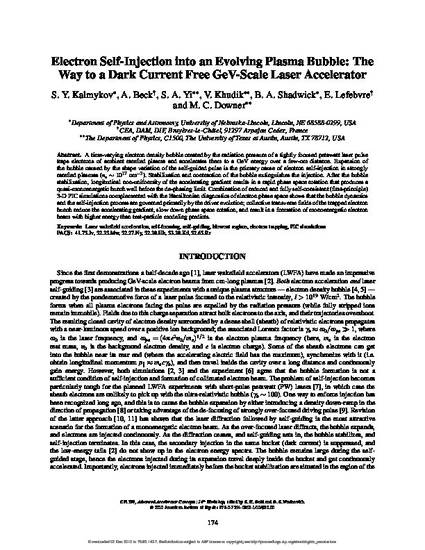
A time-varying electron density bubble created by the radiation pressure of a tightly focused petawatt laser pulse traps electrons of ambient rarefied plasma and accelerates them to a GeV energy over a few-cm distance. Expansion of the bubble caused by the shape variation of the self-guided pulse is the primary cause of electron self-injection in strongly rarefied plasmas (n_0 ~ 10^{17} cm^{−3}). Stabilization and contraction of the bubble extinguishes the injection. After the bubble stabilization, longitudinal non-uniformity of the accelerating gradient results in a rapid phase space rotation that produces a quasi-monoenergetic bunch well before the de-phasing limit. Combination of reduced and fully self-consistent (first-principle) 3-D PIC simulations complemented with the Hamiltonian diagnostics of electron phase space shows that the bubble dynamics and the self-injection process are governed primarily by the driver evolution; collective transverse fields of the trapped electron bunch reduce the accelerating gradient, slow down phase space rotation, and result in a formation of monoenergetic electron beam with higher energy than test-particle modeling predicts.
- Laser wakefield acceleration,
- self-focusing,
- self-guiding,
- blowout regime,
- Hamiltonian theory of electron self-injection,
- optical shock,
- particle-in-cell simulations,
- Texas Petawatt,
- GeV electrons from laser plasmas
Available at: http://works.bepress.com/serguei_kalmykov/28/
